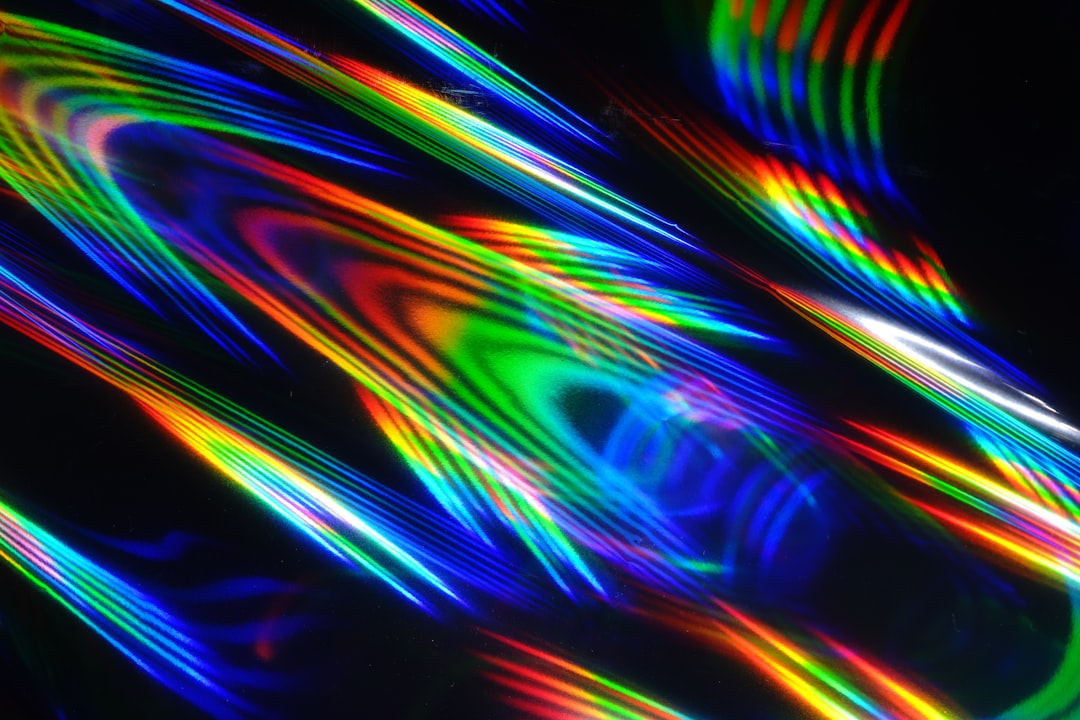Do you ever wonder whether we truly exist solely in the physical world? As technology advances, we're venturing more and more into the digital realm. It's in this digital frontier that a compelling phenomenon is on the rise - the concept of human holograms. A human hologram is a representation of us, projected in a three-dimensional form. It's not just a product of sci-fi movies or futuristic tech concepts. It's here, it's real, and it's developing rapidly.
Human Holograms at a Glance:
- Human holograms are 3D digital representations that appear life-like.
- They are created using a process called photogrammetry, converting multiple photos into a 3D model.
- This model is then projected with light onto a holographic display, creating an illusion of a human presence.
- Human holograms are used in diverse sectors, including education, entertainment, advertising, and even medicine.
And although we can't yet produce a hologram that's entirely identical to a real person, we're getting closer with every pivotal innovation in this technological sphere. The potential of human holography is vast – from being used as personal digital assistants and business consultants to functioning as virtual brand ambassadors.

The world of human holograms might seem complex, but by breaking down the science behind it and looking at its practical applications, we aim to empower you with a comprehensive understanding. Join us as we delve further into the captivating field of human holograms and explore its tangible benefits in our professional lives and beyond.
What is a Hologram Person?
A Hologram Person, often referred to as a human hologram, is a cutting-edge form of digital representation. It's like a virtual clone made from light! Imagine a three-dimensional figure that looks just like a real person — but you can see through it. This figure can talk, move, and even interact with the environment, but it doesn't have a physical form.
To create a Hologram Person, we use a blend of photography, 3D modeling, and projection technology. Cameras capture the subject from multiple angles. Then, computer software stitches these images together into a full 3D model. Finally, this model is projected into the air using holographic displays. The result? A life-like figure that seems to stand and move within our world.
Hologram People are not just fancy gadgets from the future. They are here now, transforming fields like education, entertainment, and customer service. They offer a new, immersive way to connect and engage, making interactions more memorable and impactful.
In essence, a Hologram Person bridges the gap between the digital and the real world. It's an exciting technology that's expanding the boundaries of how we live and communicate. So, let's embrace this journey into the realm of holograms and discover what's possible!
Understanding the Creation Process of Human Holograms
In the fascinating world of human holograms, the magic lies in the science behind it. To truly understand human holograms, we need to delve into the creation process. This process primarily involves the use of lasers, the creation of interference patterns, and the recording and viewing of the holograms.
The Role of Lasers in Creating Holograms
At Lumina, we understand the paramount role lasers play in creating holograms. A laser beam is split into two, with one segment, known as the object beam, reflecting off the human subject or a 3D model of the human. Simultaneously, the other beam, the reference beam, is directed straight at the holographic medium. This process is vital as it sets the stage for the creation of interference patterns, which are integral to the formation of a human hologram.
The Importance of Interference Patterns
Interference patterns form the heart of holography. When light waves interact with each other, they create patterns known as interference patterns. These patterns, when recorded on a holographic medium, can produce a 3D image when illuminated with light, thus creating a hologram.
The creation of these patterns is possible due to the unique properties of lasers. The coherent light from a laser allows the production of distinct and stable interference patterns, which are crucial for capturing a high-quality 3D image of a human subject.

The Process of Recording and Viewing Holograms
The recording of a human hologram involves capturing the interference patterns on a holographic medium. Once the patterns are recorded, the holographic plate undergoes a development process in a chemical solution, solidifying the interference pattern into a visible hologram.
When it comes to viewing the hologram, the developed hologram needs to be illuminated with a light source similar to the laser used in the recording process. This reveals the 3D holographic image that can be viewed from any angle, just like a real person.
Understanding each of these steps in depth and how they contribute to the creation of a human hologram forms an essential part of our mission at Lumina. We believe in empowering our customers with knowledge, ensuring that they can appreciate the intricate process that goes into creating the captivating displays offered by our holographic fans and 3D LED displays.
The Practical Applications of Human Holograms
Understanding how a human hologram is created is fascinating, but what’s even more exciting is seeing them in action. From revolutionizing medical procedures to ramping up advertising campaigns, human holograms have a wide range of practical applications. Let’s dive into three major areas where they are making a significant impact.
Human Holograms in the Medical Field
The medical field is one of the earliest adopters of this technology, and for good reason. Human holograms allow medical professionals to visualize intricate internal organs in 3D, offering a completely new perspective and enhancing the quality of patient care.
For instance, surgeries such as the Inferior Vena Cava Filter Implantation have been conducted using 5G and holographic projection. Remote guides can assist in such procedures, enhancing accuracy and reducing the risk of complications. It's not just about surgeries, though. With the rise of telemedicine, human holograms can make remote consultations feel more personal and immersive, improving patient-doctor interactions.
The Use of Human Holograms in Advertising and Marketing
For us at Lumina, one of the most exciting applications of human holograms is in advertising and marketing. With the ability to create a life-size, three-dimensional projection of a person or product, human holograms can make advertisements more engaging and memorable.
Moreover, the use of our holographic fans and 3D LED displays can create a more personal connection with consumers. A hologram of a celebrity endorsing a product can make the endorsement feel more real and authentic. Or a hologram of a salesperson can provide personalized customer service, answering questions and providing information about products.
Human Holograms in Social Media and Entertainment
Moving on to entertainment, human holograms have been used in several groundbreaking performances. Remember the mesmerizing performance by Madonna with the animated band Gorillaz at the 2006 Grammys, or the unforgettable appearance of the late Tupac Shakur at Coachella in 2012? These are perfect examples of how human holograms can bring dead celebrities back to life or fill in for missing band members.
In the realm of social media, we believe the next big thing could be interactive holograms. Imagine being able to interact with your favorite celebrity or influencer in 3D!
Human holograms are not just a futuristic concept, they are already among us, transforming the way we learn, communicate, and entertain. As our understanding and technology continue to evolve, we can only imagine the endless possibilities that lie ahead.
In the next section, we'll take a look at what the future holds for human holograms. Stay with us!
The Future of Human Holograms
As we journey further into the digital age, the future of human holograms shows immense promise. Not only are they set to continue their transformative impact on various industries, but they will also harness the power of evolving technologies such as artificial intelligence (AI) and machine learning to create even more immersive and interactive experiences.
The Potential of AI and Machine Learning in Human Hologram Creation
AI doesn't just bring robots to life, it's also revolutionizing human holograms. With the advent of machine learning, we at Lumina are able to create digital humans that behave more realistically, respond in real-time, and offer a more human-like interaction. This technology can analyse and learn from vast amounts of data, enabling us to create holograms that can understand and respond to human behaviour, creating a more interactive and engaging experience.
The Role of Holographic Fans and 3D LED Displays in Advancing Hologram Technology
Holographic fans and 3D LED displays like ours at Lumina are playing a significant role in advancing human hologram technology. These technologies offer high-quality, detailed imagery and vibrant colours, making human holograms more lifelike and captivating. They are also portable and user-friendly, making it easier for anyone to create and display human holograms.
Moreover, the affordability of these technologies is making human holograms more accessible, opening up new possibilities for their use in various sectors. For example, they can be used in retail environments to attract customers, in education to create immersive learning experiences, or in healthcare for patient education and medical training.
The Future Possibilities of Human Holograms in Various Industries
The future possibilities for human holograms span across numerous industries. In healthcare, they could provide detailed 3D models for medical training or for planning complex surgeries. They could also be used to educate patients about their health conditions in a more engaging and understandable way.
In the field of education, human holograms could create interactive and immersive learning experiences, helping students to understand complex topics more easily. Meanwhile, in the retail sector, they could revolutionize marketing and customer experience, driving customer engagement and sales.
In the entertainment and media industry, human holograms could take us to new levels of immersion, creating unforgettable experiences. They could bring legendary artists back for posthumous performances, or create stunning visual effects at concerts and shows.
How to Create Your Own Human Hologram with Lumina
With the future of human holograms looking bright, it's natural to want to dive in and create your own. At Lumina, we've simplified this process, making it accessible to everyone. Here are some steps on how to create your own human hologram using our holographic fans and 3D LED displays.
An Overview of Lumina's Holographic Fans and 3D LED Displays
Our holographic fans and 3D LED displays are designed to produce vivid 3D images. They work based on the principle of Persistence of Vision (POV), a phenomenon where the brain perceives an image for a brief period of time after the image has been removed. By controlling the timing of the LED lights on our rapidly moving fan blades, we create a holographic illusion that captivates your audience.
Moreover, we've built our fans to be durable, ensuring they're designed for long-term use. With regular maintenance, you can ensure the longevity of your hologram fan.
The Process of Creating a Custom 3D Display with Lumina
Creating and uploading content for your hologram display is straightforward. You can upload content in various formats such as mp4, mov, avi, png, jpg, and gif through an app or an SD card.
Here's the process:
- Design Your Hologram: Start by designing or importing your hologram designs using the provided software. Experiment with simple designs initially to familiarize yourself with the software.
- Upload Your Designs: Once your designs are ready, upload them to the fan using an app or an SD card. Ensure the files are in supported formats.
- Continuous Play: Your uploaded content will play continuously in alphabetical order without needing a constant connection.
Tips for Creating Captivating 3D Effects with Lumina's Technology
The magic of a mesmerizing human hologram lies in the editing process. Here are some tips for enhancing your holographic display:
- Be Patient: High-quality editing takes time. Adjust as needed, and remember that the more effort you put into the editing process, the better your final product will be.
- Adjust Settings: Play around with the settings of your hologram display. Adjust elements like brightness, speed, and position to perfect the hologram display to your liking. For an immersive experience, you can also connect a Bluetooth speaker to your hologram fan if it supports audio.
- Use Suitable Software: Various video editing software can help enhance your hologram display. Ensure the software you use has options for adjusting brightness, contrast, and color saturation to make your video visually appealing.
Creating a human hologram with Lumina's technology is now easier than ever. With just a few steps, you can create captivating 3D displays that will surely impress any audience. So, let your creativity run wild and step into the future with Lumina.
Conclusion: The Exciting World of Human Holograms
As we've explored throughout this guide, human holograms is not only incredibly fascinating, but it's also full of potential. The impact of this technology on our lives and the various industries is already significant and it's poised to increase in the future.
The Impact of Human Holograms on Our Lives
Human holograms are more than just a concept from science fiction movies – they're a reality. They are revolutionizing the way we communicate, learn, and interact with digital content. From remote meetings and virtual events to interactive education and personalized customer service, human holograms are enhancing our digital experiences in numerous ways.
For instance, the use of holographic humans in the medical field is transforming medical training and simulations. Holographic projectors can provide detailed 3D models of human anatomy, offering an interactive and engaging learning experience for medical students and professionals.
In advertising and marketing, human holograms enable us to create captivating and unique displays that can grab attention, convey information, and tell stories in a compelling way. This is exactly what we at Lumina aim to achieve with our holographic fans and 3D LED displays.
The Potential of Human Holograms in the Future
The future of human holograms is bright and promising. As technology continues to advance, we can expect to see even more realistic and immersive holograms. By integrating advancements in sensor technology and artificial intelligence, future holograms could become capable of responding to user's actions in real time. This opens up new possibilities for gaming, education, and other fields.
In addition, the increasing demand for advanced holographic displays is driving rapid advancements in technology. The potential for creating interactive, realistic, and engaging holographic experiences is vast. Whether it's in the form of a holographic concert, a holographic advertisement, or a holographic video call, we can expect these virtual humans to become a common sight in our lives.
The potential doesn't stop here. At Lumina, we're committed to pushing the boundaries of what's possible with human holograms. We believe that our technology has the potential to revolutionize many areas of life, and we're excited to be at the forefront of this technological revolution.
We hope this guide has helped you understand the exciting world of human holograms. If you're interested in creating your own holograms, we invite you to explore our holographic fans and 3D LED displays. And if you have any questions, don't hesitate to contact us.

Welcome to the future of digital communication – welcome to human holograms!
Frequently Asked Questions
Are human holograms possible?
Yes, human holograms have been created using various technologies including Pepper's ghost and digital holography.
How much does a human hologram cost?
The cost varies significantly based on the complexity and quality, ranging from a few hundred to several thousand dollars.
How do you make a human hologram?
Creating a human hologram involves capturing a person's likeness using cameras or scanners, then projecting or displaying this data using holographic display technology.
Can a hologram be live?
Yes, live holograms can be created with real-time capture and projection technology.
What does it mean if we live in a holographic universe?
The holographic principle suggests that the universe can be described by information encoded on a two-dimensional surface.
What would it mean if the universe is a hologram?
It could challenge our understanding of space, time, and reality, proposing a different way to explain gravitational and quantum mechanics.
Do touchable holograms exist?
Touchable holograms are in development, using technologies like ultrasonic waves to create tactile feedback.
What does a hologram of a person look like?
A hologram of a person appears three-dimensional and lifelike, although its appearance can vary based on the quality and method of holography used.



